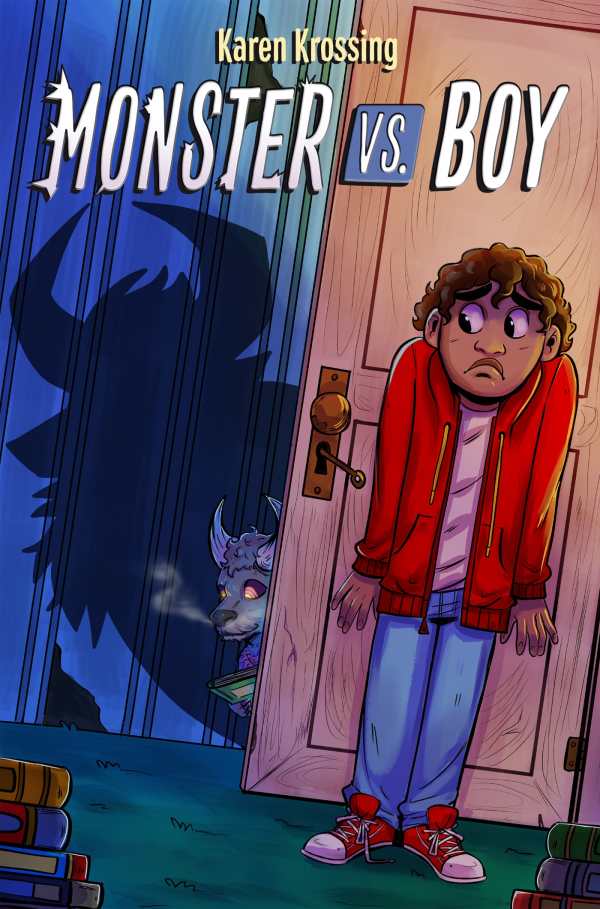Monster vs. Boy
In Karen Krossing’s meaningful novel Monster vs. Boy, a child faces a monster and his own past.
Eleven-year-old Dawz lives with his sister and their uncle, who adopted the children after their mother disappeared. He is happy, enjoys time with his best friend, and nurtures his passion for cooking. He also suspects that there is a monster in his closet. When he finally sees the monster, he realizes that he cannot tell anyone. He fears they will think that he sounds like his mother, who mumbled about yellow feathers and a scorpion tail.
Mim has lived in the closet for years, enjoying her small space and listening to Dawz and his family read. After Dawz sees her, she ends up in search of a new nest, hoping to find friends and the secrets to reading along the way. But Mim and Dawz continue to cross paths; they are connected.
A book whose story of a boy hunting a monster is really about mental health and learning to accept the darkest parts of oneself, this story builds as more people join in on Dawz’s search—and as each new character offers him their own support. The adults listen to and reassure him. His uncle shares information about his mother, giving him truths as he is ready to deal with them. Eventually, Dawz is ready to face Mim.
The story is set in a small town with a history of monsters; the community expresses ready belief in Dawz’s claims. Stated differences in racial and sexual identities also feed into themes of acceptance and support the idea that Dawz must appreciate everything about himself, just as those around him accept and appreciate each other.
Monster vs. Boy is a supportive novel in which a boy learns to address his trauma—with his community’s support.
Reviewed by
Catherine Thureson
Disclosure: This article is not an endorsement, but a review. The publisher of this book provided free copies of the book to have their book reviewed by a professional reviewer. No fee was paid by the publisher for this review. Foreword Reviews only recommends books that we love. Foreword Magazine, Inc. is disclosing this in accordance with the Federal Trade Commission’s 16 CFR, Part 255.

